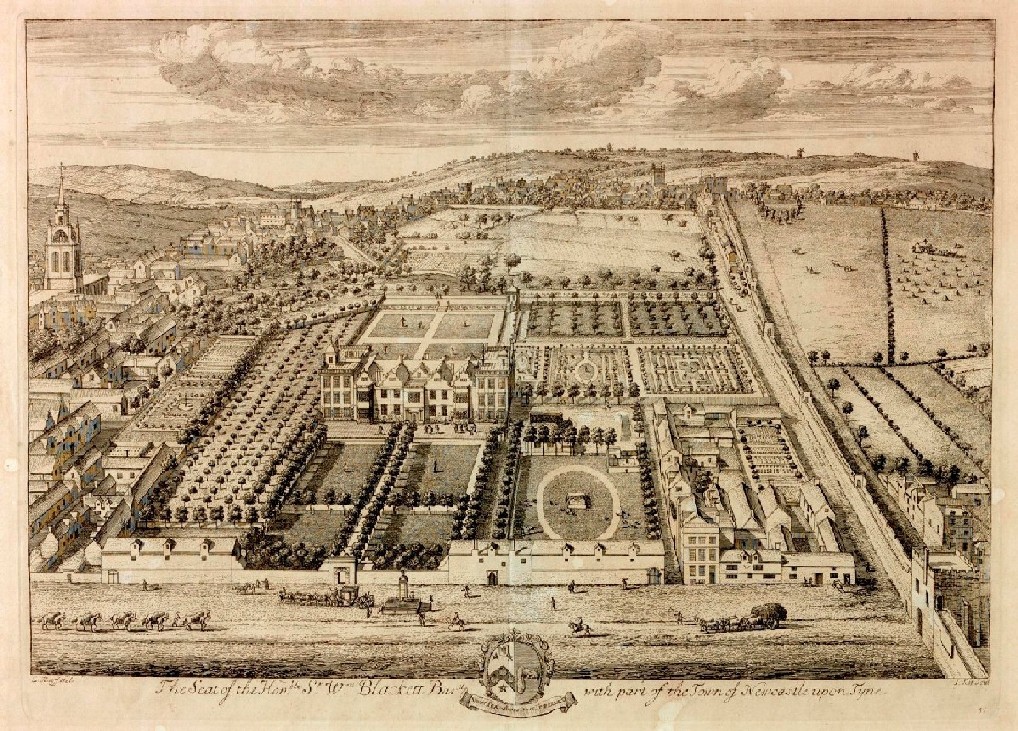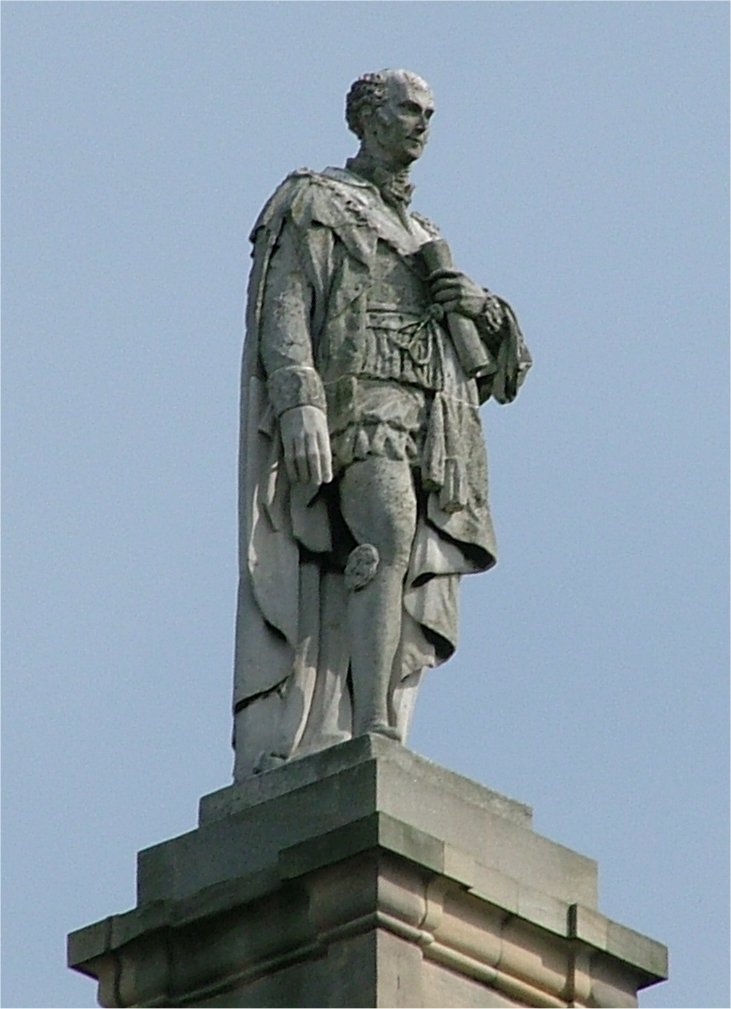Earl Grey’s Monument sits at the heart of Newcastle and is a place where people gather, meet friends and thousands of people come through the Monument area every single day.
In years gone by, this was a very different location from what you see today. In the past, the location wouldn’t have been much different from many areas of today’s rural Northumberland, with hills rising gradually up towards the west and rapidly falling land to the east. Here, the land fell into a large valley known as Pandon Dene – around the same size as today’s Jesmond Dene.
New House and the Andersons

On the current site of the Monument, during the Middle Ages, there was a large town house and estate. It was called the New House and was run by a family called the Andersons. The estate stretched from the current sites of Pilgrim Street to Grainger Street and from Blackett Street behind the Monument to New Bridge Street near the river. The house was a huge part of Newcastle with acres of beautiful gardens around it, which meant that the Andersons, although a small family, controlled a great deal of Newcastle.
In stark contrast to the estate, down where the modern-day Quayside is, there was a one-mile by three-mile stretch of land where 25,000 people lived in very different conditions from the wealth and opulence of the Andersons on the hill.
Standing at the foot of the Monument, looking down Grey Street, you’d have been standing in an open river called the Dene Burn. The burn remained in the centre of Newcastle right up until the late 1700s.
The rise of Richard Grainger

Eventually the Anderson family died out. Major Anderson was the final surviving member of the family to live at New House before he died in 1831. Three years after his death, Richard Grainger and his associates purchased the Anderson estate and brought it within the Grainger Town – a huge development of the time. The development would have cost around half a billion pound in today’s money and employing around 20,000 labourers in the heart of Newcastle.
As part of that development, they built Seven Dials Circus around where the current Monument stands. It was supposed to be the North’s version of Piccadilly Circus – a meeting place of various different streets in the heart of the Newcastle.
Why Earl Grey?

The man honoured by today’s Monument wasn’t always popular in Newcastle. That was because of the Great Reform Act. In this Act, the Old Guild system in Britain was swept away. In Newcastle the Guilds were heavily entrenched with most people in the area being members. They had the right to vote through their Guild and when the Guilds were abolished, it left a lot of people feeling disenfranchised and suspicious of Earl Grey. There was a great deal of debate about whether to honour the Earl with a statue because, as the new laws allowed only men over 25 years old with more than £10 worth of property to have a vote, there were fewer people with the vote in Newcastle than there had been before.
A local hero by the name of Admiral Collingwood was the man that people wanted to honour with a Monument in Newcastle, but Tynemouth had already beaten the city to that idea, with the Collingwood Monument erected on the coast.
Newcastle didn’t want to be seen as copying Tynemouth so they commissioned the Earl Grey statue instead.
Today’s Earl Grey Monument

The Monument we know today is 130ft tall. It was originally designed to be taller but finances at the time curbed the height.
During World War II in 1941, a lightning bolt hit the top of the Monument during a storm and Earl Grey’s head was knocked clean off. The head flew through a furniture store window, causing a great deal of damage. The entrepreneurial owner of the shop took full advantage of the accident by claiming their furniture was so good, even the Earl had visited the store!
In more recent times, the Monument started to collapse during the building of the city’s Metro system beneath the city. Underpinning work took place to make sure the Monument remains upright and safe as today’s central hub in the magnificent city of Newcastle Upon Tyne.
If you’d like to know more about the history of Newcastle, follow our social media channels and YouTube channels below:


